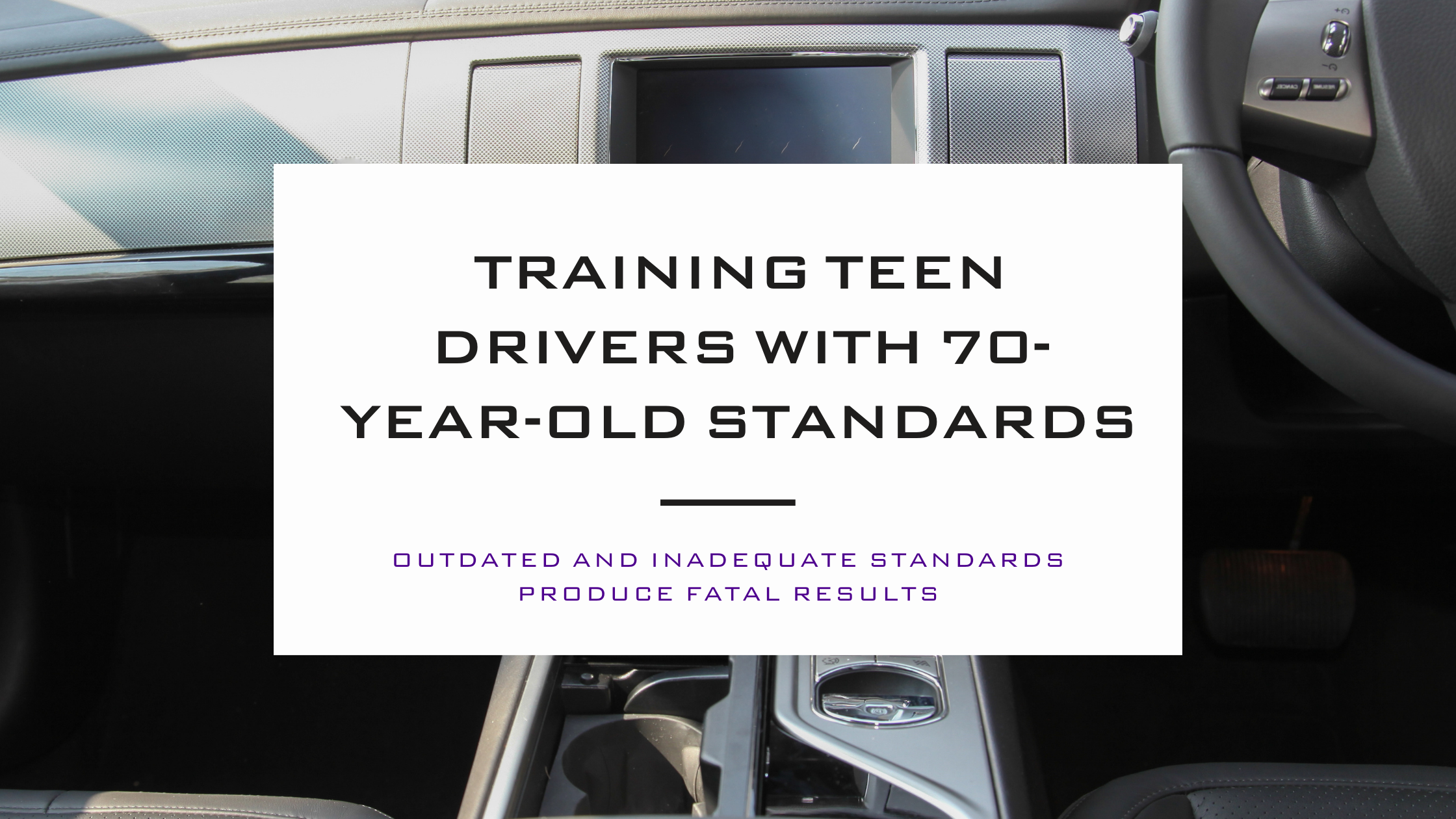It seems fitting to begin National Teen Driver Safety Week with a brief look at the current standards for driver education. In a recent American Driver and Traffic Safety Education Association (ADTSEA) report, they noted that the minimum education standards of 30-hour classroom and 6 hours of behind the wheel trainer were established in 1949. They went on to say, “these very old standards were inadequate when established, and they are certainly inadequate now”—and we couldn’t agree more.
In their report ADTSEA also stated, “Based on the non-fatal collision reports of the last twenty years, there has been little if any progress in the preparation of teenage drivers. The potential of driver education has never been fully realized because of the inadequate time standards, teacher training programs, administrative policies, and the program financing.” In other words, we continue training to 70-year-old standards while thousands of teen drivers have become collateral damage in the war on safety.
Perhaps the best summary of our drivers education system in America is the conclusion of a study published in 2012 by the National Highway Traffic Safety Administration which states, “Current driver education appears to do a good job of preparing students to pass the licensing exam. The expectation that driver education will lead to a decreased crash rate is unrealistic and beyond what current practice can be expected to achieve”.
The deficiencies these outdated and inadequate standards produce become tragically clear when you review the statistical data surrounding teenage vehicle fatalities. Year after year, over 80% of these fatalities are directly attributed to “driver error”. That not only makes them fully preventable, it makes them even more tragic because for over 70 years, we’ve done little to provide teens with the preparation that can save their lives.
In our opinion, it’s time to stop expecting the automobile manufacturers to save the lives of our nations teen drivers by creating new safety standards for vehicles. Instead, we need to begin placing value on the lives of these teenagers by educating and training them on how to reduce the fatal errors they make behind the wheel. None of us could site an existing 70 year old standard for anything that remains acceptable in today’s world, so why do we continue accepting an outdated, inadequate standard for preparing teens to drive when it’s the leading cause of death for people their age?
How can we expect our teen drivers to take driving seriously if we, as a society, refuse to get serious about raising the standards for the preparation they’re given for driving?




